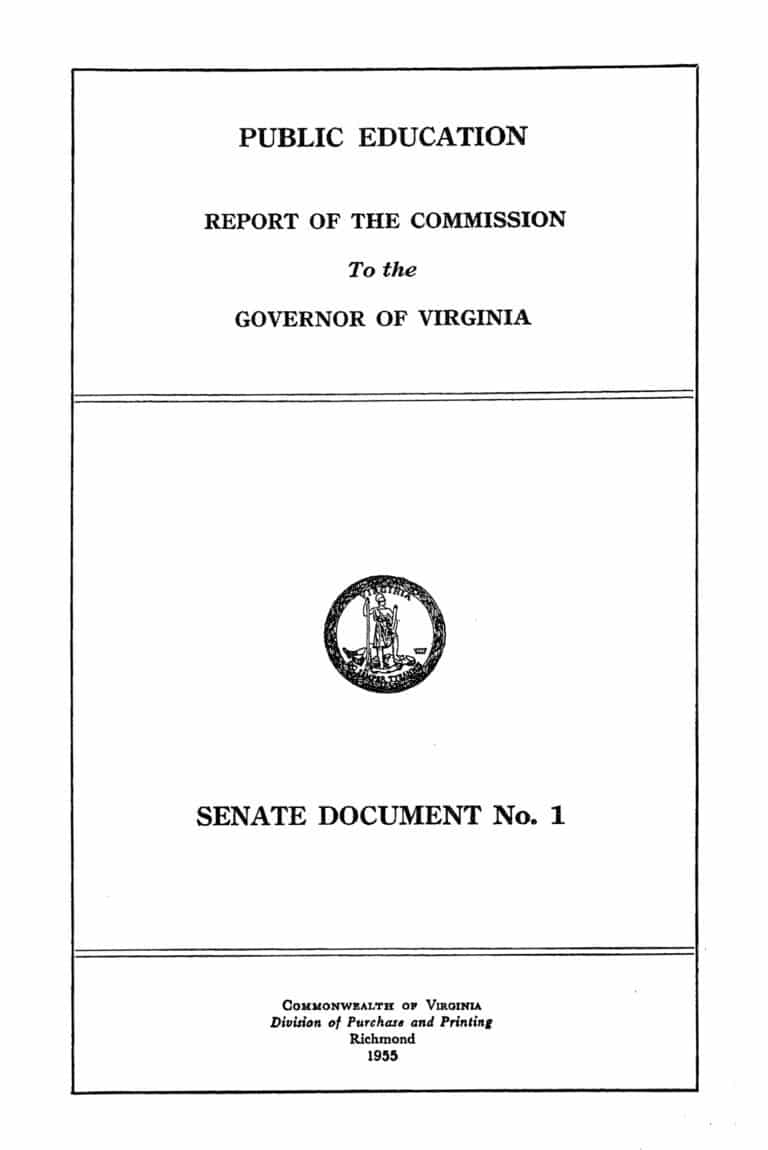RESOURCES
DOCUMENTS
Gray Commission Report
1955
Our modern public school system has been developed on a racially segregated basis and advancement of the Negro race has been a direct result of such a system. Without segregation…public schools would have made no progress and Negro children would have received little or no public education.
— Page 7,
Gray Commission Report
The Gray Commission Report was a key document in Virginia’s early response to the Brown v. Board of Education Supreme Court decision of 1954, which declared racial segregation in public schools unconstitutional. It was named for Garland Gray, a powerful Virginia state senator and staunch segregationist, who chaired the commission that produced it.
The report proposed a “local option” approach to school desegregation, which included:
1. Pupil Assignment Plans: Giving local school boards the authority to assign students to schools, with broad discretionary powers. This would allow them to maintain segregation indirectly.
2. Tuition Grants: Providing public funds (vouchers) to help white families send their children to private schools if their local public schools were desegregated.
3. School Closures as a Last Resort: Allowing the state to close public schools that were forcibly integrated by court order, but only after exhausting other options.
4. Preservation of Public Education: Unlike later proposals, the Gray Commission stopped short of calling for massive school closures across the state. It was seen as a moderate segregationist response, trying to slow or limit desegregation while keeping public schools open.
Initially seen as a compromise between outright defiance and immediate compliance with Brown.The report was rejected by hardliners, including Byrd himself, who pushed instead for Massive Resistance—a more confrontational and defiant strategy.In 1956, the Stanley Plan replaced the Gray Commission’s recommendations with much harsher measures, including automatic school closures and statewide resistance to integration orders.
